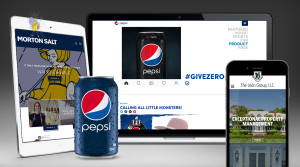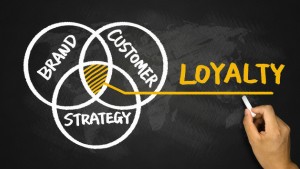Just because you’re an older organization that came to fruition before strategic brand building was commonplace doesn’t mean you’ve missed the boat. If your brand needs a refresh or a restart, don’t feel as if the latest and greatest...
When starting a new company, building your brand should be at the top of your to-do list. Having a strong brand in your arsenal is crucial to starting at the bottom and moving up the ladder. These new organizations seemingly live at the forefront of the brand development landscape, driving new best practices and rolling out new techniques all the time.
But just because you’re an older organization that came to fruition before strategic brand building was commonplace doesn’t mean you’ve missed the boat. If your brand needs a refresh or a restart, don’t feel as if the latest and greatest branding techniques are only left to the upstarts and newcomers.
There’s no better time than the present to begin engage the appropriate parties and begin the process to bring your brand up to speed with your competition and maximize its ability to drive success.
Without going into too much detail on the brand development process, let’s explore three reasons why branding is important for the established organizations in the business world.
Brand? What’s a brand?
The first reason is that you may not actually have a “brand” in position for your organization. There are a number of reasons why this may be the case, but it’s quite possible your organization has been riding on the success of a particular product or two, making the strength of your organizational brand minimal.
But just because you’ve had success before doesn’t mean you can’t set yourself up for even more success in the future. Diving into building a strategic brand will almost assuredly answer questions you never even thought to ask and take your organizations you never thought you could go. It could be as simple as creating a visual brand that drives a new website design or, for the first time, defining who your target audience is and identifying how to best position your brand for them. No matter what, taking that leap will open new doors for your organization and give you a part of it that will work for you.
No matter when you started the game, everyone is still playing on the same field.
Having an established history and a long list of accomplishments are two things that every business would love to have. But in the day-to-day reality of the marketplace, the memory of today’s consumers can be short, often negating much of the historical advantage of an older brand. What matters is more of right in front of them in that moment – when brands are judged by “what have you done for me lately” and “what do I think of you right now.”
This “right now” mentality puts a heavy emphasis on ensuring that your brand, no matter its age, speaks to consumers as you’d like it to, getting your key differentiation messaging across right away. From names that make sense and connected directly to what your organization offers to logos and visual branding aspects that are aesthetically pleasing and in line with current trends, your brand needs to bring itself up-to-date.
What made sense before may not make sense today.
One of the biggest reasons why organizations are in need of an updated brand is that they’ve simply outgrown the old one, if they even had a “brand” to begin with. When your organization began, maybe you offered two main products, which dominated everything about who you were – your name only spoke to those two, your logo featured them both prominently, your target audience was the market for those two – but now, you’re leaving a lot on the table.
The best brand refreshes and rebrands are able to toe the line between old and new, artfully connecting what made the brand great before with what makes it great today. This is especially true for organizations whose newer offerings are now the star – when they weren’t acknowledged in the brand elements, too much weight was put on them succeeding on their own. They were lone wolves out on the market – quite possibly, the majority of their audience had no idea there was a connection between that product and your brand. So bring them in from the cold and let them bask in the warmth of the overall brand’s strength.
Has your company recently experienced change or growth? Due to changes in business strategies, acquisitions, internal organizational changes or the addition of new products to a portfolio, your brand strategy may need to evolve over time. Click here to download your free copy of “Your Brand’s Guide to Corporate Change” today, and learn how to align your brand and business strategy for success!










